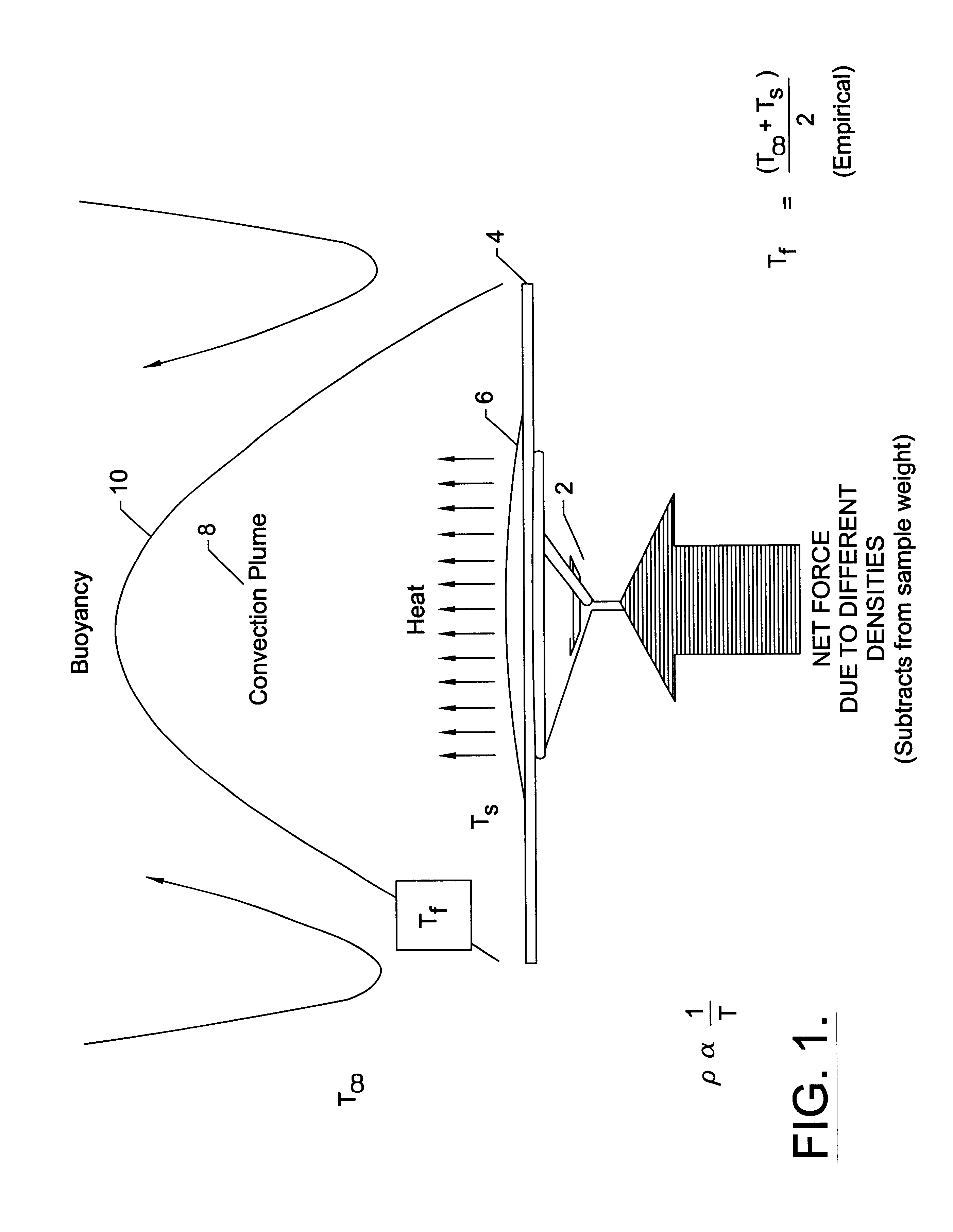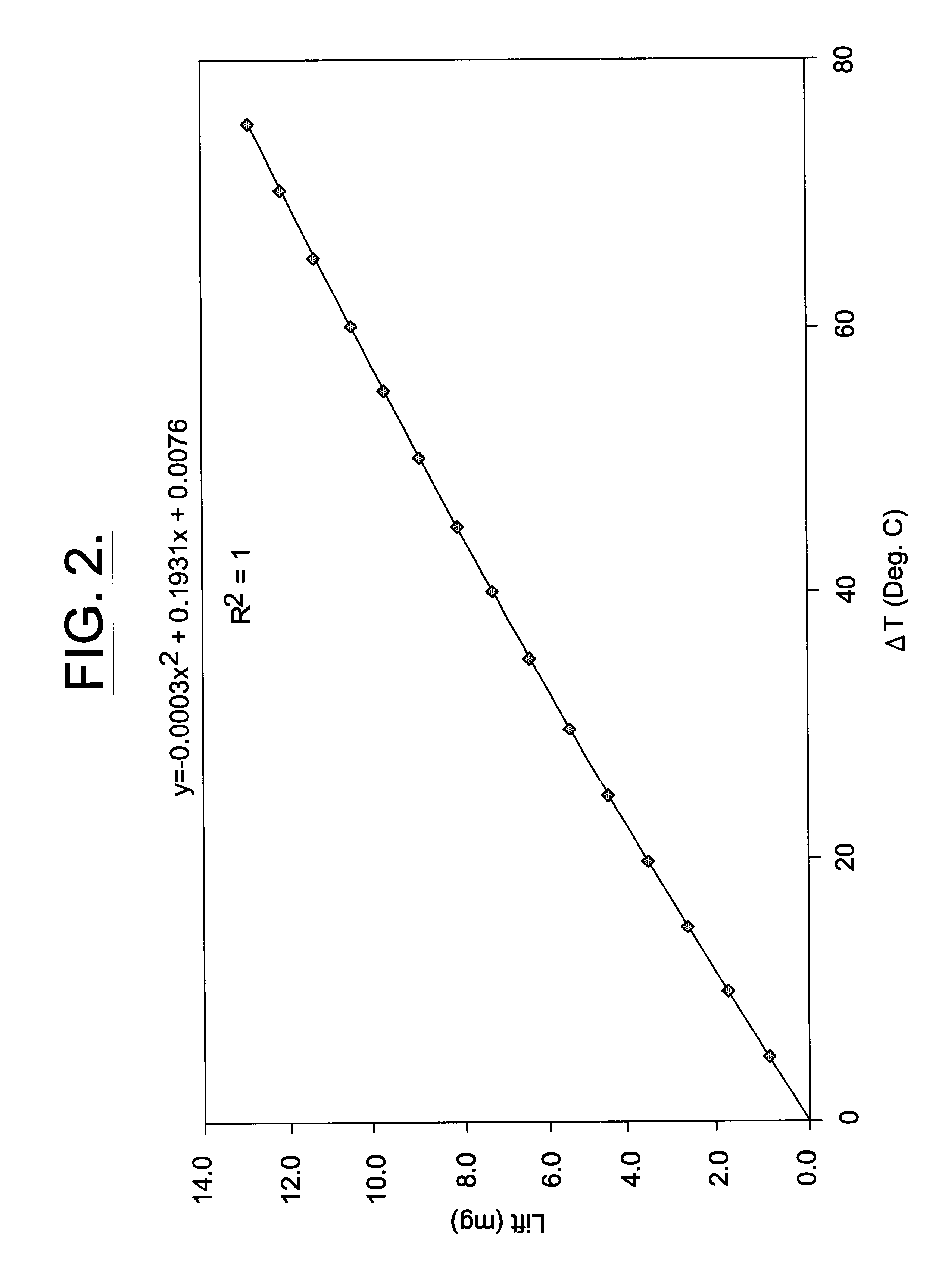Method for correcting weight measurement errors during microwave heating
- Summary
- Abstract
- Description
- Claims
- Application Information
AI Technical Summary
Benefits of technology
Problems solved by technology
Method used
Image
Examples
example 1 , example 2
Like Example 1, Example 2 discloses calculated buoyancy lift data as a result of a temperature variance between the upper surface of CEM Corporation's standard 98 cm.sup.2 sample pad (3.85".times.4.0") and the ambient air otherwise surrounding the sample pad (i.e., F.sub..infin. -F.sub.f). Example 2, however, examines lift at an ambient air temperature of 50.degree. C. and a pressure of 1013 millibars (i.e., 1 atmosphere).
As will be understood by those having ordinary skill in the art, a warmer ambient air temperature reduces the buoyancy of the sample pad. This is true not only in absolute sense, as it is illustrated in FIG. 3, but also in a relative sense, as it is illustrated in FIG. 4. Both FIGS. 3 and 4 illustrate the data presented in Examples 1 and 2.
Finally, Example 3 also discloses calculated buoyancy lift as a result of a temperature variance between the upper surface of CEM Corporation's standard 98 cm.sup.2 sample pad (3.85".times.4.0") and the ambient air otherwise surr...
example 3
In this regard, FIG. 5 illustrates the relative effect of ambient air pressure on buoyancy lift as a function of temperature differential (i.e., T.sub.s -T.sub..infin.) by graphically illustrating the data from Example 3. As will be understood by those having ordinary skill the art, assuming a constant temperature differential, lower ambient air pressure will reduce calculated buoyancy lift as compared to a higher ambient air pressure.
PUM
 Login to View More
Login to View More Abstract
Description
Claims
Application Information
 Login to View More
Login to View More - R&D
- Intellectual Property
- Life Sciences
- Materials
- Tech Scout
- Unparalleled Data Quality
- Higher Quality Content
- 60% Fewer Hallucinations
Browse by: Latest US Patents, China's latest patents, Technical Efficacy Thesaurus, Application Domain, Technology Topic, Popular Technical Reports.
© 2025 PatSnap. All rights reserved.Legal|Privacy policy|Modern Slavery Act Transparency Statement|Sitemap|About US| Contact US: help@patsnap.com



